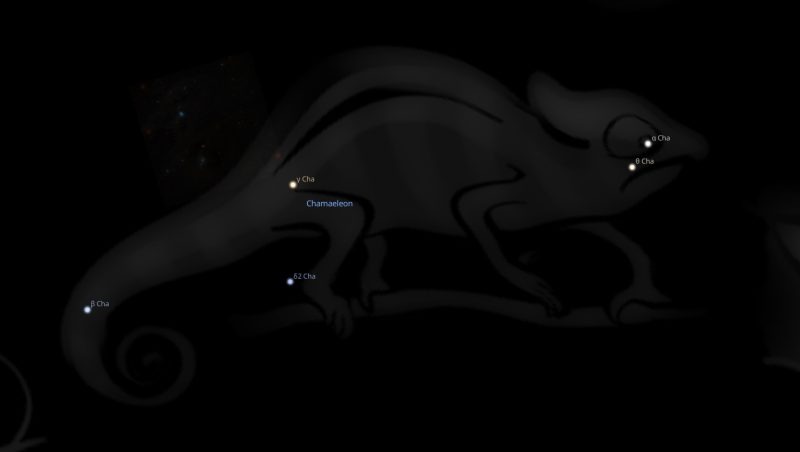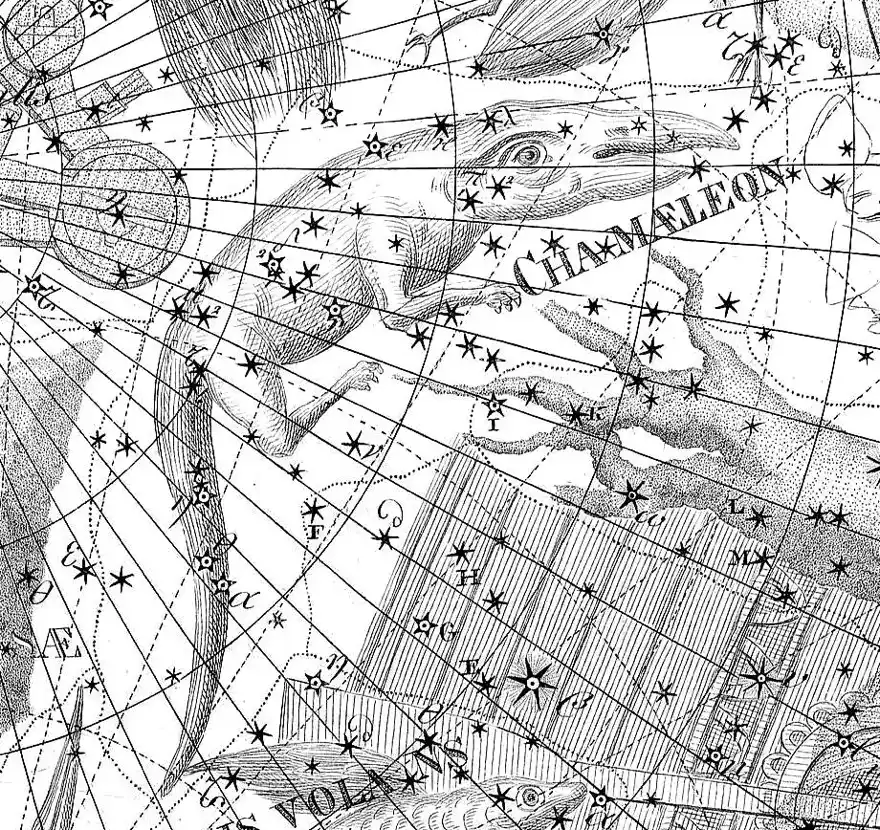FIXED STARS: Major Stars | 1000+ Stars | Constellations | About
Constellation Chamaeleon is a southern constellation bordering Octans, Apus, Musca, Carina, Volans, Mensa and the obsolete constellations Argo Navis and Robur Carolinum.Chamaeleon was introduced by Johann Bayer in 1603, and it remains one of the 88 modern constellations. It spans 21 degrees of the zodiac in the Signs of Scorpio and Sagittarius.
Abbreviation: Cha
Genitive: Chamaeleotis
Chamaeleon Constellation Stars
| 2000 | 2050 | Star | Name | Sp. Class | Mag. | Orb |
|---|---|---|---|---|---|---|
| 29♏16 | 29♏58 | α Cha | F5 | 4.05 | 1°20′ | |
| 00♐25 | 01♐06 | γ Cha | M0 | 4.11 | 1°20′ | |
| 01♐03 | 01♐45 | θ Cha | K0 | 4.34 | 1°10′ | |
| 05♐26 | 06♐07 | β Cha | B5 | 4.24 | 1°20′ | |
| 05♐39 | 06♐20 | δ2 Cha | B2 | 4.45 | 1°10′ |
Chamaeleon Astrology
Robson
History. Added by Bayer in 1604.
Influence. Chamaeleon is said to give a practical and sound mind with a love of knowledge, a sympathetic and adaptable nature, and a fondness for travel and the drama. [1]
Allen
Chamaeleon is a small and unimportant constellation below Carina, Octans separating it from the south pole. It was first published and figured by Bayer among his new constellations from observations by navigators of the preceding century. Pontanus, in Chilmead’s Treatise, included it with Musca as “the Chamaelon with the flie”; but Julius Schiller entirely changed its character by combining it with Apus and Musca in his biblical Eve.
None of its stars seem to be named except in China, where some of the larger were Seaou Tow, a small Measure or Dipper, that our α, θ, η, ι, ε, μ2, and μ1 well show.
Gould gives 50 naked-eye components from 4.2 to the 7th magnitude. [1]
References
- Fixed Stars and Constellations in Astrology, Vivian E. Robson, 1923, p.38.
- Star Names: Their Lore and Meaning, Richard H. Allen, 1889, p.165.

